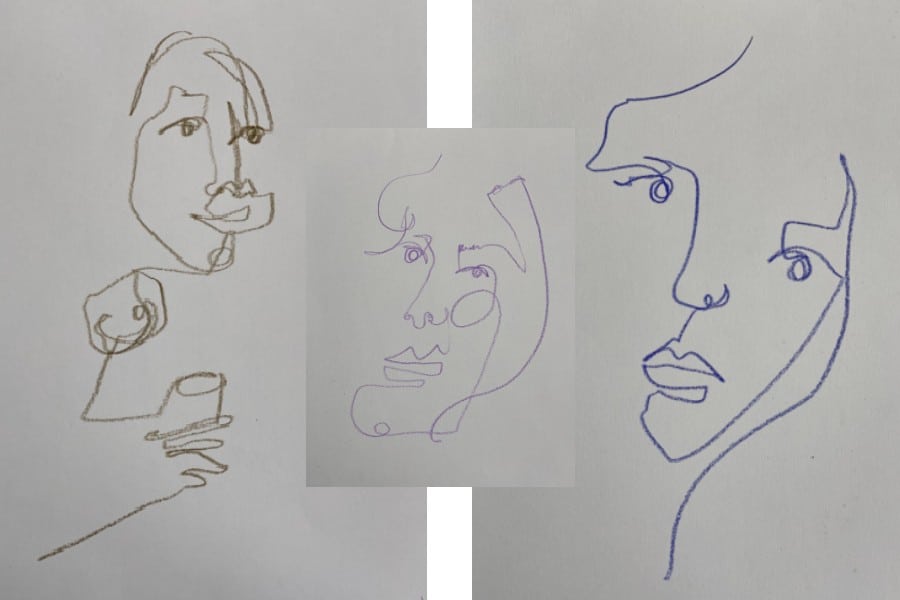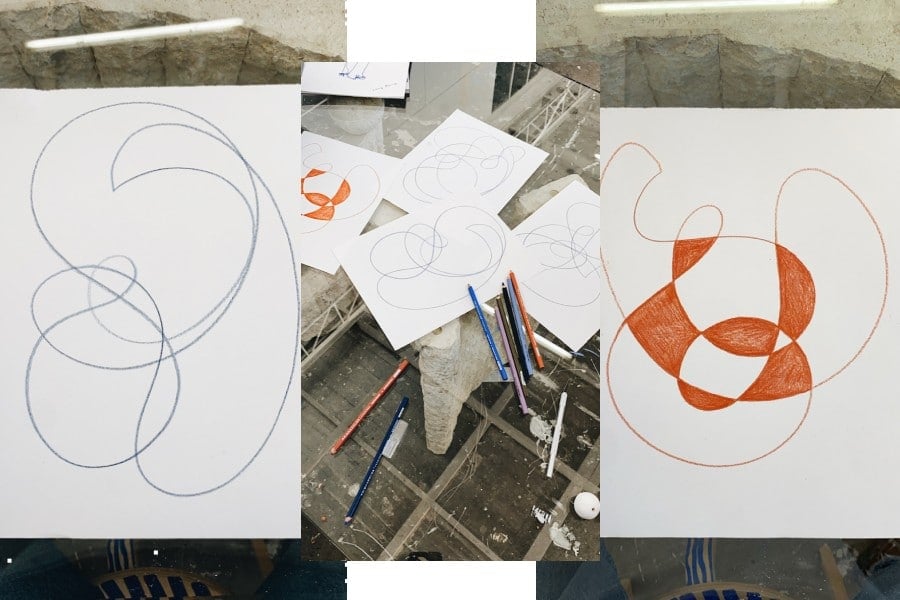
Art therapy. Free flow movements and languid lines gliding across the page. Artist and photographer Bobby Clark’s how-to for blind drawing and continuous lines is a treat for those craving a little inspiration in times of solitude. Clark’s purposeful healing movements that tap into our cognitive connection come as a welcome and much needed distraction in our strange new realities. She also assures us there’s no right or wrong way to do this and you needn’t be a professional, “The shitter the better!” The creative exercise came to fruition as a boost of motivation for a friend in need and now we can all enjoy too. All you need is paper, a pen or pencil, some home objects and an open mind. See below for our full interview with Clark and her guide to continuous lines and blind drawing at home.
How do you stay creative in isolation?
I go for a big walk every morning through All Nations Park in Northcote with my baby James and a coffee. I then try get to the studio every day, even if it’s just moving things around or only doing one drawing, it makes me feel like things are just as they were. I’ve been using this time to re-watch my favourite art documentaries and researching old paint techniques. I feel a change coming with my work and want to challenge myself to something completely different. There’s no better time than the present.
What brings you the most pleasure in times like these?
A new sense of community. Coming from a small town in Scotland I really missed that. Everyone says good morning to each other back home and our neighbours become like an extended family. Now people are connecting more than ever. My studio. A new slower pace, the space to explore new things. The new concept of time, or lack of it. That I can talk to my friends and family on the other side of the world, but most of all the overwhelming gratitude for our life we have built together.
What inspired your latest demonstration? And why did you choose blind-drawing and continuous lines?
I’ve essentially been in ISO for 11 weeks following the birth of our son, which has been really difficult, but also really important. I’m not good at being still, I had so much space to think. My work had become a little static and I really felt like starting something different. I always go back to basics when trying to discover something new. After speaking to a heartbroken friend who is in ISO (isolation) and struggling to get daily motivation, I said I would do her a little creative exercise. Something that the bases is letting go, of just doing. Blind drawing and continuous lines were always a loosening up exercise in art classes and art school at the beginning of a new project. The beauty in those simple marks is that you don’t need to be an artist or even creative. It’s all about forming a connection between what you see and your movements. It requires you to look at an everyday object differently, really looking at it, focusing on connecting your cognitive responses to form shapes on a piece of paper which is such a simple yet beautiful practice.

Your steps for blind drawing at home.
All you need is something to draw with and something to draw on. *By no means do you have to buy new art materials. Use a lipstick and a napkin.
Alone – challenge yourself to set up a still life, or draw parts of your space or furniture. You can also grab a mirror and set it up in front of you (add a bowl of pasta and a glass of wine and you’ve got yourself a date).
With friends / family - set yourself up around a table with objects or still life or even sit across from each other.
*Sitting in front of a mirror, or across from someone, or in front of your object / still life – place your pencil on the paper look up and letting your eye guide your hand on the paper without looking down. Your hands should mirror the movements of your eyes as it travels around the face / body / object. No peaking! The shitter the better!

Your steps for continuous lines at home.
Same as before starting with your pencil or pen on the paper let your intuition guide your movements and mark making. The objective is to not break the connection between paper and pen until you are finished. It can be an abstract continuous loop drawing, or a face, etc. Using the same concept as blind drawing but without lifting the pen from the paper. Your drawing must be complete in one continuous movement.
Watch the full demonstration on Bobby Clark’s Art Class Instagram stories here.
In need of further inspirations? See ceramicist Rachel Saunders’ guide to pottery at home or try one of our isolation baking recipes or even a some of our DIY beauty treatments.



